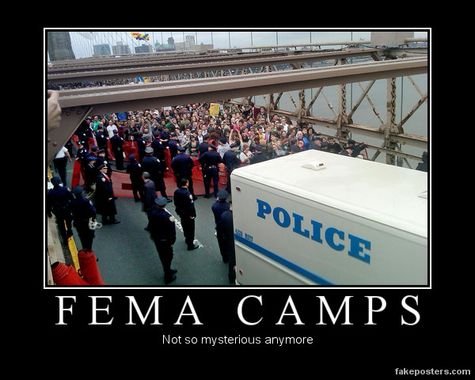Been spending time at the CDC website. Been reading about their Green Zones,and Shielding zones........here is a bit from their pdf........

COVID-19MENU
Print
This document presents considerations from the perspective of the U.S. Centers for Disease Control & Prevention (CDC) for implementing the shielding approach in humanitarian settings as outlined in guidance documents focused on camps, displaced populations and low-resource settings.1,2 This approach has never been documented and has raised questions and concerns among humanitarian partners who support response activities in these settings. The purpose of this document is to highlight potential implementation challenges of the shielding approach from CDC’s perspective and guide thinking around implementation in the absence of empirical data. Considerations are based on current evidence known about the transmission and severity of coronavirus disease 2019 (COVID-19) and may need to be revised as more information becomes available. Please check the CDC website periodically for updates.
Current evidence indicates that older adults and people of any age who have serious underlying medical conditions are at higher risk for severe illness from COVID-19.3 In most humanitarian settings, older population groups make up a small percentage of the total population.4,5 For this reason, the shielding approach suggests physically separating high-risk individuals from the general population to prioritize the use of the limited available resources and avoid implementing long-term containment measures among the general population.
In theory, shielding may serve its objective to protect high-risk populations from disease and death. However, implementation of the approach necessitates strict adherence1,6,7, to protocol. Inadvertent introduction of the virus into a green zone may result in rapid transmission among the most vulnerable populations the approach is trying to protect.
A summary of the shielding approach described by Favas is shown in Table 1. See Guidance for the prevention of COVID-19 infections among high-risk individuals in low-resource, displaced and camp and camp-like settings 1,2 for full details.
Table 1: Summary of the Shielding Approach1
Level
Movement/ Interactions
Household (HH) Level:
A specific room/area designated for high-risk individuals who are physically isolated from other HH members.
Low-risk HH members should not enter the green zone. If entry is necessary, it should be done only by healthy individuals after washing hands and using face coverings. Interactions should be at a safe distance (approx. 2 meters). Minimum movement of high-risk individuals outside the green zone. Low-risk HH members continue to follow social distancing and hygiene practices outside the house.
Neighborhood Level:
A designated shelter/group of shelters (max 5-10 households), within a small camp or area where high-risk members are grouped together. Neighbors “swap” households to accommodate high-risk individuals.
Same as above
Camp/Sector Level:
A group of shelters such as schools, community buildings within a camp/sector (max 50 high-risk individuals per single green zone) where high-risk individuals are physically isolated together.
One entry point is used for exchange of food, supplies, etc. A meeting area is used for residents and visitors to interact while practicing physical distancing (2 meters). No movement into or outside the green zone.
Table 2: Suggested Prerequisites per the shielding documents and CDC’s Operational Considerations for Implementation
Suggested Prerequisites
*As stated in the shielding document*
Considerations as suggested by CDC
This is only a part of this particular pdf,and I understand it was printed a year ago...but as we approach another lockdown, could this be in the works...........nah......

COVID-19MENU
Interim Operational Considerations for Implementing the Shielding Approach to Prevent COVID-19 Infections in Humanitarian Settings
Updated July 26, 2020This document presents considerations from the perspective of the U.S. Centers for Disease Control & Prevention (CDC) for implementing the shielding approach in humanitarian settings as outlined in guidance documents focused on camps, displaced populations and low-resource settings.1,2 This approach has never been documented and has raised questions and concerns among humanitarian partners who support response activities in these settings. The purpose of this document is to highlight potential implementation challenges of the shielding approach from CDC’s perspective and guide thinking around implementation in the absence of empirical data. Considerations are based on current evidence known about the transmission and severity of coronavirus disease 2019 (COVID-19) and may need to be revised as more information becomes available. Please check the CDC website periodically for updates.
What is the Shielding Approach1?
The shielding approach aims to reduce the number of severe COVID-19 cases by limiting contact between individuals at higher risk of developing severe disease (“high-risk”) and the general population (“low-risk”). High-risk individuals would be temporarily relocated to safe or “green zones” established at the household, neighborhood, camp/sector or community level depending on the context and setting.1,2 They would have minimal contact with family members and other low-risk residents.Current evidence indicates that older adults and people of any age who have serious underlying medical conditions are at higher risk for severe illness from COVID-19.3 In most humanitarian settings, older population groups make up a small percentage of the total population.4,5 For this reason, the shielding approach suggests physically separating high-risk individuals from the general population to prioritize the use of the limited available resources and avoid implementing long-term containment measures among the general population.
In theory, shielding may serve its objective to protect high-risk populations from disease and death. However, implementation of the approach necessitates strict adherence1,6,7, to protocol. Inadvertent introduction of the virus into a green zone may result in rapid transmission among the most vulnerable populations the approach is trying to protect.
A summary of the shielding approach described by Favas is shown in Table 1. See Guidance for the prevention of COVID-19 infections among high-risk individuals in low-resource, displaced and camp and camp-like settings 1,2 for full details.
Table 1: Summary of the Shielding Approach1
Level
Movement/ Interactions
Household (HH) Level:
A specific room/area designated for high-risk individuals who are physically isolated from other HH members.
Low-risk HH members should not enter the green zone. If entry is necessary, it should be done only by healthy individuals after washing hands and using face coverings. Interactions should be at a safe distance (approx. 2 meters). Minimum movement of high-risk individuals outside the green zone. Low-risk HH members continue to follow social distancing and hygiene practices outside the house.
Neighborhood Level:
A designated shelter/group of shelters (max 5-10 households), within a small camp or area where high-risk members are grouped together. Neighbors “swap” households to accommodate high-risk individuals.
Same as above
Camp/Sector Level:
A group of shelters such as schools, community buildings within a camp/sector (max 50 high-risk individuals per single green zone) where high-risk individuals are physically isolated together.
One entry point is used for exchange of food, supplies, etc. A meeting area is used for residents and visitors to interact while practicing physical distancing (2 meters). No movement into or outside the green zone.
Operational Considerations
The shielding approach requires several prerequisites for effective implementation. Several are addressed, including access to healthcare and provision of food. However, there are several prerequisites which require additional considerations. Table 2 presents the prerequisites or suggestions as stated in the shielding guidance document (column 1) and CDC presents additional questions and considerations alongside these prerequisites (column 2).Table 2: Suggested Prerequisites per the shielding documents and CDC’s Operational Considerations for Implementation
Suggested Prerequisites
*As stated in the shielding document*
Considerations as suggested by CDC
- Each green zone has a dedicated latrine/bathing facility for high-risk individuals
- The shielding approach advises against any new facility construction to establish green zones; however, few settings will have existing shelters or communal facilities with designated latrines/bathing facilities to accommodate high-risk individuals. In these settings, most latrines used by HHs are located outside the home and often shared by multiple HHs.
- If dedicated facilities are available, ensure safety measures such as proper lighting, handwashing/hygiene infrastructure, maintenance and disinfection of latrines.
- Ensure facilities can accommodate high-risk individuals with disabilities, children and separate genders at the neighborhood/camp-level.
- To minimize external contact, each green zone should include able-bodied high-risk individuals capable of caring for residents who have disabilities or are less mobile. Otherwise, designate low-risk individuals for these tasks, preferably who have recovered from confirmed COVID-19 and are assumed to be immune.
- This may be difficult to sustain, especially if the caregivers are also high risk. As caregivers may often will be family members, ensure that this strategy is socially or culturally acceptable.
- Currently, we do not know if prior infection confers immunity.
- The green zone and living areas for high-risk residents should be aligned with minimum humanitarian (SPHERE) standards.6
- The shielding approach requires strict adherence to infection, prevention and control (IPC) measures. They require, uninterrupted availability of soap, water, hygiene/cleaning supplies, masks or cloth face coverings, etc. for all individuals in green zones. Thus, it is necessary to ensure minimum public health standards6 are maintained and possibly supplemented to decrease the risk of other outbreaks outside of COVID-19. Attaining and maintaining minimum SPHERE6 standards is difficult in these settings for the general population.8,9,10 Users should consider that provision of services and supplies to high risk individuals could be at the expense of low-risk residents, putting them at increased risk for other outbreaks.
- Monitor and evaluate the implementation of the shielding approach.
- Monitoring protocols will need to be developed for each type of green zone.
- Dedicated staff need to be identified to monitor each green zone. Monitoring includes both adherence to protocols and potential adverse effects or outcomes due to isolation and stigma. It may be necessary to assign someone within the green zone, if feasible, to minimize movement in/out of green zones.
- Men and women, and individuals with tuberculosis (TB), severe immunodeficiencies, or dementia should be isolated separately
- Multiple green zones would be needed to achieve this level of separation, each requiring additional inputs/resources. Further considerations include challenges of accommodating different ethnicities, socio-cultural groups, or religions within one setting.
- Community acceptance and involvement in the design and implementation
- Even with community involvement, there may be a risk of stigmatization.11,12 Isolation/separation from family members, loss of freedom and personal interactions may require additional psychosocial support structures/systems. See section on additional considerations below.
- High-risk minors should be accompanied into isolation by a single caregiver who will also be considered a green zone resident in terms of movements and contacts with those outside the green zone.
- Protection measures are critical to implementation. Ensure there is appropriate, adequate, and acceptable care of other minors or individuals with disabilities or mental health conditions who remain in the HH if separated from their primary caregiver.
- Green zone shelters should always be kept clean. Residents should be provided with the necessary cleaning products and materials to clean their living spaces.
- High-risk individuals will be responsible for cleaning and maintaining their own living space and facilities. This may not be feasible for persons with disabilities or decreased mobility.11 Maintaining hygiene conditions in communal facilities is difficult during non-outbreak settings.7,8,9 consequently it may be necessary to provide additional human resource support.
- Green zones should be more spacious in terms of shelter area per capita than the surrounding camp/sector, even at the cost of greater crowding of low-risk people.
- Ensure that targeting high-risk individuals does not negate mitigation measures among low-risk individuals (physical distancing in markets or water points, where feasible, etc.). Differences in space based on risk status may increase the potential risk of exposure among the rest of the low-risk residents and may be unacceptable or impracticable, considering space limitations and overcrowding in many areas.
This is only a part of this particular pdf,and I understand it was printed a year ago...but as we approach another lockdown, could this be in the works...........nah......
Last edited:








